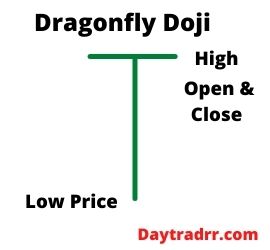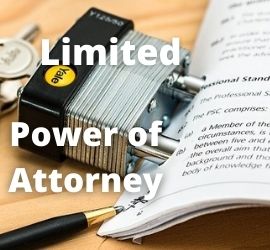What is a Stop Limit Order?
 A stop-limit order is an order to buy or sell a stock combining the features of a stop order and a limit order to help traders control risk.
A stop-limit order is an order to buy or sell a stock combining the features of a stop order and a limit order to help traders control risk.
The order provides conditional trade instructions over a set timeframe combining the features of a stop and a limit order. These instructions are used to mitigate risk and provide greater control to the trader. Limit orders instruct a broker to either buy or sell a specified number of shares at a given price or better. Stop-on-quote orders instruct a broker to either buy or sell a security after its price has moved past a specified point.
Stop-limit orders trigger a limit order once the stock reaches, or breaks through, a specified stop price. It consists of two price points, the stop price, and the limit price. The stop price is the price that activates the limit order and is based on the last trade price. The limit price identifies the price range required to execute the order once it is triggered. There is no guarantee that a stop-limit order, once triggered, will result in order execution. It is a useful tool when trading securities. However, there are still risks involved. A stop-limit order doesn’t guarantee that any trade will occur if the specified prices are not properly met.
A stop-limit order is an order to buy or sell a stock that combines the features of a stop order and a limit order. Once the stop price is reached, a stop-limit order becomes a limit order that will be executed at a specified price (or better). The benefit of a stop-limit order is that the investor can control the price at which the order can be executed. (Source: sec.gov)
How a Stop Limit Order Works
A stop-limit order requires two price points to be identified as well as a timeframe.
- Stop price – The start of the specified target price for the trade.
- Limit price – The outside of the price target for the trade.
- Timeframe – A timeframe must also be set, during which the stop-limit order is considered executable.
The primary benefit of a stop-limit order is that the trader gains control over when the order should be filled. As with all limit orders, there is a risk that the trade may not be executed. This can happen if the security does not reach the stop price during the specified time period. The stop-limit order will only be executed at the specified price (or better) after a given stop price has been reached. Once the stop price is reached, it becomes a limit order to buy or sell at the limit price or better. This type of order is an available option with nearly every broker.
Know your brokers’ trigger criteria. Different brokerage firms may have different standards for determining whether the stop price of a stop-limit order has been reached. Some brokerage firms use only last-sale prices to trigger a stop-limit order, while others use quotation prices. Investors should check with their brokerage firms to determine which standard would be used for stop-limit orders. (Source: sec.gov)
Why Traders Use A Stop Limit Order
Traders use stop-limit orders when they are not actively monitoring the market. The order helps trigger a buy or sell order when the security reaches a specified point. Once the price is met, the order automatically goes into effect. The following are the two main stop-limit orders that traders place. Using this tool can limit losses and guarantee a trade at a specified price. However, there are still risks involved with such an order.
Buy Stop Limit Order
A buy stop limit is used to purchase a stock if the price hits a specific price point. It helps traders control the purchase price of stock once they’ve determined an acceptable maximum price per share. A stop price and a limit price are then set once the trader identifies the highest price they are willing to pay per stock. The stop price is a price that is above the market price of the stock. The limit price is the highest price that a trader is willing to pay per share.
For example, consider a trader who intends to buy XYZ Co stock that is valued at $100 per share. begins moving upward, he can enter a stop price at $105. It means that once the price reaches $105, the trade is executed. The order becomes active and turns into a market order. If the limit order is capped at $110, the order is processed after reaching $105. However, if the price exceeds $110, and the remainder is not fulfilled.
Sell Stop Limit Order
A sell stop limit provides conditional instructions to a broker to sell the stock when its price falls below a specific price. This is called the stop price. A sell stop limit identifies two different prices, a stop price, and a limit price. A stop price is a price at which the instructions to sell are activated. The limit price is the lowest price that the trader is willing to accept.
A sell stop order tells the broker to sell the stocks if the price drops to the stop point or below. However, he can only execute the trade above the minimum specified price per share. For example, if the current price per share is $100, the trader can set a stop price at $95 and a limit order at $93. The order is activated when the price falls to $95, but not below $93. Below $93, the order will not be fulfilled. (Source: corporatefinanceinstitute.com)
Limit Order vs Stop Order
A stop order is filled at the market price after the stop price is reached. This is regardless of whether the price continues to change and becomes unfavorable. This can lead to undesirable trades being completed if the market moves quickly. However, by combining it with the features of a limit order, trading is halted once the pricing becomes unfavorable. The investor chooses exactly where to set that limit. By combining the two, after the specified price is triggered, the limit order goes into effect. This ensures that the order is not completed unless the price is at or better than the specified limit price.
- A stop order is an order that can only be filled once a set price has been reached. It is then filled at the current market price. A traditional stop order will be filled in its entirety. This is regardless of any changes in the current market price as the trades are completed.
- A limit order is set at a specified price by the trader. It is only to be executed when the trade can be performed at the limit price or better. Better means at a price that is considered more favorable than the limit price. If market trading activity causes the price to become unfavorable in regards to the specified price, the activity will cease and remain unfilled.
By combining the two orders, the investor has much greater precision in executing the trade.
Risks
The risks include:
- No Execution – Placing an order does not guarantee that the trade will be executed. This is because the market price may never beat the limit price. If the limit is attained for a short time, it may not be executed when there are other orders in the queue that utilize all stocks available at the current price.
- Partial Fills – Partial fills may occur when only a part of the shares in the stock order is executed, leaving an open order. Executing parts of a single order for each trading day the execution occurs will involve multiple commissions, which reduces the overall returns of a trader.
- Moving target – An order may not be executed if the stock’s price moves away from the specified limit price. This can occur in a fast-moving market.
- The prices can be different – The stop price and the limit price do not have to be the same price. For example, a sell stop order with a stop price of $3.00 may have a limit price of $2.50. Such an order would become an active limit order if market prices reach $3.00, however, the order can only be executed at a price of $2.50 or better.
- Beware of short-term price fluctuations – An order may be triggered by a short-term, intraday price move that results in an execution price for the stop order that is substantially inferior to the stock’s closing price for the day. Investors should carefully consider the risk of such short-term price fluctuations in deciding whether to use a stop order and in selecting the stop price for an order. (Source: sec.gov)
Microsoft (MSFT) Example
For example, assume that Microsoft Corp. (MSFT) is trading at $270.00 and an investor wants to buy the stock once it begins to show some serious upward momentum. The investor has put in a stop-limit order to buy with the stop price at $280.00 and the limit price at $285.00. If the price of MSFT moves above the $280.00 stop price, the order is activated and turns into a limit order. As long as the order can be filled under $285.00, which is the limit price, the trade will be filled. If the stock gaps above $285.00, the order will not be filled.
Buy stop-limit orders are placed above the market price at the time of the order. Sell stop-limit orders are placed below the market price.
Up Next: Is Huawei Stock Listed?
 Huawei is a privately held mainland Chinese company. It is not a publicly listed company, so Huawei stock is not traded on any global stock exchange.
Huawei is a privately held mainland Chinese company. It is not a publicly listed company, so Huawei stock is not traded on any global stock exchange.
Huawei is a Chinese multinational telecommunications equipment and services company. The firm has headquarters in Guangdong, China. The company was established in 1987 to manufacture phone switches. Since then, it has expanded operations and now builds telecommunications networks and manufactures communications devices. Huawei works with some of the world’s largest telecoms operators, including British Telecom (BT), Vodafone, Orange, and T-Mobile among its notable partners. This makes the company a valuable telecom infrastructure brand worldwide. According to Statista, the brand value is estimated to be more than $65 billion U.S. dollars in 2020.




